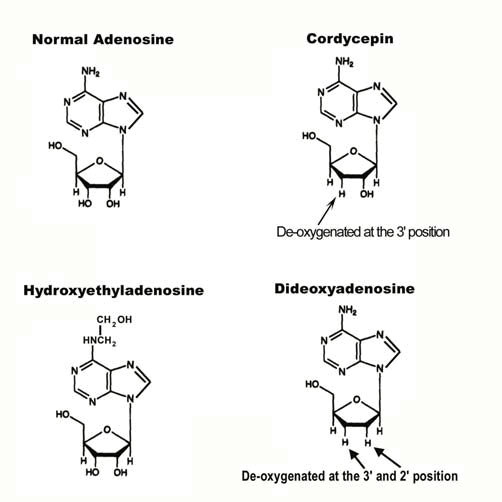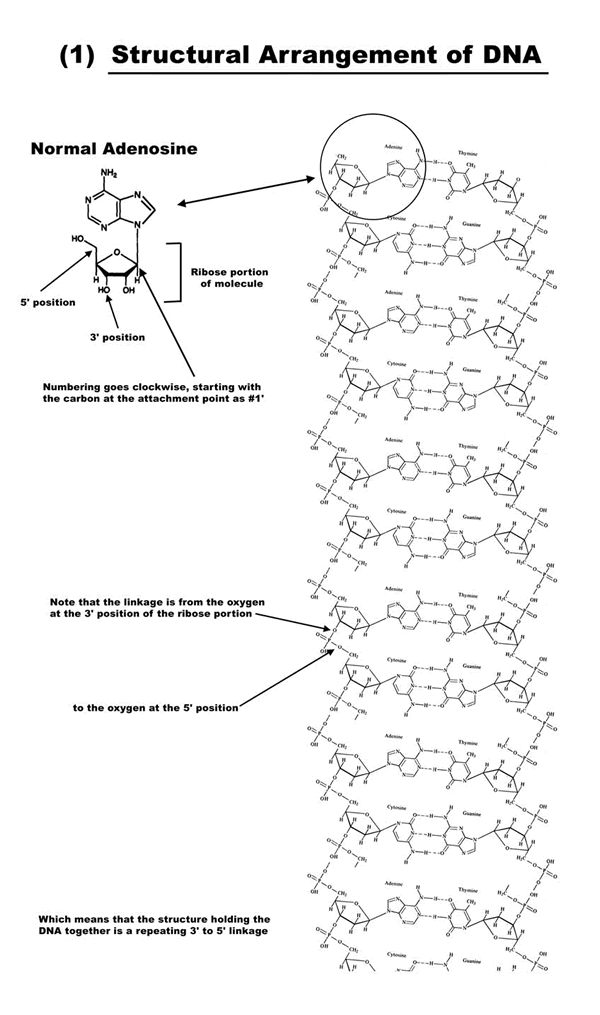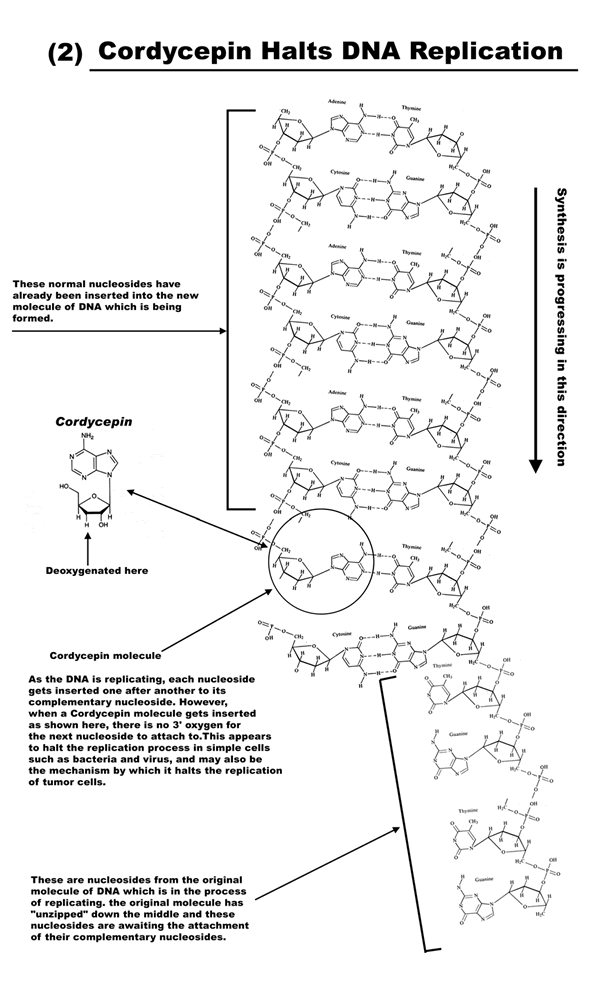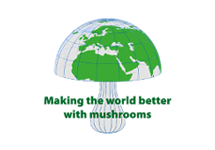In research to be published in the Journal of Biological Chemistry, Dr Cornelia de Moor of The University of Nottingham and her team have investigated a drug called cordycepin, which was originally extracted from a rare kind of wild mushroom called cordyceps and is now prepared from a cultivated form.
Dr de Moor said: “Our discovery will open up the possibility of investigating the range of different cancers that could be treated with cordycepin.
(http://www.bbsrc.ac.uk/news/archive/2009/091223-pr-new-insights-mushroom-derived-drug-for-cancer.aspx)
(http://www.sciencedaily.com/releases/2009/12/091223094729.htm)
Purpose of this published study is scientific information and education, it should not be used for diagnosing or treating a health problem or disease. This website is designed for general education and information purposes only and does not substitute for professional medical advice, examination, diagnosis or treatment.
Mushroom polysaccharides and Immune system
Administration of polysaccharides fractions CI-P and CI-A derived from Cordyceps in doses of one to ten mg/kg per day, demonstrated substantial antitumor activities in mice with sarcoma 180. An alkali soluble polysaccharide, named CI-6P, derived from the species Cordyceps sobolifera, yielded remarkable results against murine sarcoma 180 when administered in doses of 10 mg/kg/day. (Mizuno 1999) In a related study, B-(1- 3)-D-glucan, fraction CO-1 and the galactosaminoglycan fraction CO-N, derived from Cordyceps ophioglossoides, inhibited the growth of ascitic Sarcoma 180. Increased immune functiondetected as well, quantified by an increase in carbon clearance activity. (Ohmori 1998, 1999) In one study, the CO-N fraction of Cordyceps ophioglossoides showed a remarkable effectiveness against the sarcoma 180 cell line, which is a reference solid tumor used for laboratory assays of anti-tumor effectiveness. A single dose of only 0.5 mg/kg-injected i.p into mice inhibited tumor growth by an astounding 98.7%! (Ohmori et al 1986). This nearly complete tumor inhibition certainly heralds some positive potential in the development of new anticancer drugs and treatment modalities.
It is well established that numerous fungal derived simple- and protein-bound polysaccharides exert a significant potentiation of immune function. (Wasser, 2002) This is thought to be one of the major mechanisms of antitumor action by Cordyceps. Among the multiple polysaccharides produced by Cordyceps, beta-d-glucans are one class of these polymers that have been shown to increase both innate and cell-mediated immune response. These polysaccharides increase the production of such cytokines as TNF-a, interleukins, and interferons, NO, and antibodies by the activated immune cells. This activation of immune response may be triggered by polysaccharide binding to specific receptors on the surface of the immune systems cells, called the CR3 receptor. (Smith et al 2002). They are also thought to be involved in cell-to-cell communications, perhaps by acting as messenger molecules.
Many clinical studies, conducted in China and Japan with cancer patients (Wang et al 2001) with whom Cordyceps was used, have yielded positive results. In one study of fifty patients with lung cancer who were administered Cordyceps At 6 grams per day in conjunction with chemotherapy, tumors were reduced in size in 46% of patients studied. A trial involving cancer patients with several different types of tumors found that Cordyceps taken over a two month period at 6 g per day, improved subjective symptoms in the majority of patients. White blood cell counts were kept high while tumor size was significantly reduced in approximately half of the patients. (Zhou et al (1998))
Mechanism Of Action For Cordycepin (see illustrations below to follow steps)
There is evidence of another mechanism at play in the Cordyceps antitumor response besides the well-known immune modulation triggered by the polysaccharide compounds. This other mechanism has to do with the structure of at least some of the altered nucleosides found in Cordyceps, exemplified by the compound cordycepin [3’deoxyadenosine]. This is a molecule almost identical to normal adenosine, with the exception that it is lacking an oxygen atom on the ribose portion of the molecule at the 3’ position. The same lack of this 3’ oxygen can be seen in other Cordyceps compounds as well, such as Dideoxyadenosine, (Didanosine™, Videx™). The lack of oxygen at this particular position is thought to be important in a very specific way. The structure of DNA depends on this oxygen to create the bond between adjacent nucleosides. This bond is between the 3’ and the 5’ positions on the ribose portions of the nucleosides, effectively forming the ‘ladder structure’ that holds the DNA together. In the replication of any cell, the first step is the separation of the DNA molecule down the middle, like unzipping, between the pairs of complimentary nucleosides. The next step is the insertion, one at a time, of new compliment nucleosides. These form hydrogen bonds between the complement pairs, and form phosphate-sugar bonds between the 3’ and 5’ position at the outside edge of the molecule, which is the ribose portion. This, in essence, is the structure that holds the DNA together. The synthesis of the new DNA molecules proceeds apace, with the sequential insertion of new compliment nucleosides one at a time into the newly forming DNA molecule, until the original strand of DNA is replicated twice, each of these strands being exact copies of the original and forming the genetic code for a new generation of cells. That is, this synthesis continues to proceed with the insertion of each new nucleoside, unless a 3’ deoxyadenosine (cordycepin) molecule is pulled in. When this happens, there is no oxygen present at that vital position to form the 3’-5’ bond, and the replication of the new DNA molecule stops. Once the DNA synthesis stops, the cell cannot continue to divide and no new cell is formed. In normal mammalian cells, this insertion of the deoxygenated adenosine is of little importance, as healthy cells have an inherent DNA repair mechanism. When this sort of error occurs, the altered nucleoside (the cordycepin) is removed from the string of nucleosides, and a new segment of adenosine is inserted. However, by their very nature, cancer cells have lost this DNA repair mechanism. (If they could correct their DNA errors, they would not be cancer cells).

Ilustration: Some of the unique nucleosides found in Cordyceps
Most bacteria and all viruses (including the HIV virus) lack this DNA repair mechanism. When we look at the rate at which cancer cells replicate, it is clear how this mechanism could exert a significant antitumor response. For example, normal healthy breast tissue cells have an average life span of about 10 days, after which the reproduce and a new cell is formed. But breast cancer cells multiply much quicker than healthy cells. They reproduce themselves on average every 20 minutes. This means that the breast cancer cells are replicating about 750 times faster than the surrounding healthy tissue. If the cordycepin were equally toxic to both types of cells, it would be killing off the cancer cells 750 times faster than the healthy cells. But because of that DNA repair mechanism in the healthy cells, cordycepin appears not to interfere with the healthy cell replication, and the tumor-cell kill rate is actually much higher than the 750-to-1 ratio. The same sort of DNA interruption mechanism is responsible for the antitumor effects of some other chemotherapy agents as well. This same mechanism of DNA synthesis inhibition is probably the responsible mechanism for the anti-viral effects seen with cordycepin as well. See the following illustrations for a structural analysis of this mechanism. (Holliday 2004b) (Liu and Zheng, 1993 and others by inference)
Ilustrations:


Purpose of this published study is scientific information and education, it should not be used for diagnosing or treating a health problem or disease. This website is designed for general education and information purposes only and does not substitute for professional medical advice, examination, diagnosis or treatment.
REFERENCES
Bao, Z.D., Wu, Z.G., and Zheng, F. (1994). [Amelioration of aminoglycoside nephrotoxicity by Cordyceps Sinensis in old patients]. Chinese Journal of Integrated Medicine 14: 259,271-273.
Berne, R.M., 1980: The role of Adenosine in the regulation of coronary blood flow. Circ. Res. 47: 807-813, 1980
Bok JW, Lermer L, Chilton J, Klingeman HG, Towers GH., (1999) Antitumor sterols from the mycelia of Cordyceps sinensis. Phytochemistry 1999 Aug;51(7):891-8
Chamberlain, M. (1996). Ethnomycological experiences in South West China. Mycologist 10 (4): 173-176.
Chang, H.M. and But, P.P.H. (Eds.) (1986). Pharmacology and Applications of Chinese Materia Medica, 1. Philadelphia, PA: World Scientific, pp. 410-413.
Chen, J.R., Yen, J.H., Lin, C.C., Tsai, W.J., Liu, W.J., Tsai, J.J., Lin, S.F., and Liu, H.W. (1993). The effects of Chinese herbs on improving survival and inhibiting anti-ads DNA antibody production in lupus mice. American Journal of Chinese Medicine 21: 257-262.
Chen K, Li C. (1993) Recent advances in studies on traditional Chinese anti-aging Materia Medica. J Tradit Chin Med 1993 Sep;13(3):223-6,
Chen D.G., (1995) Effects of JinShuiBao Capsule on the Quality of Life of Patients with Heart Failure. Journal of Administration of Traditional Chinese Medicine 5 (1995): 40-43
Chen, S.Z. and Chu, J.Z. (1996). [NMR an IR studies on the characterization of cordycepin and 2’deoxyadenosine]. Zhongguo Kangshengsu Zaxhi 21: 9-12.
Chen, Y.J., Shiao, M.S., Lee, S.S., and Wang, S.Y. (1997). Effect of Cordyceps sinensis on the proliferation and differentiation of human leukemic U937 cells. Life Sciences 60: 2349-2359.
Chen, Y.Q., Wang, N., Qu, L., Li., T., and Zhang, W. (2001). Determination of the anamorph of Cordyceps sinensis inferred from the analysis of the ribosomal DNA internal transcribed spacers and 5.85 rDNA. Biochemical Systematics and Ecology 29: 597-607.
Chen, Y., Zhang, Y.P., Yang, Y., and Yang, D. (1999). Genetic diversity and taxonomic implication of Cordyceps sinensis as revealed by RAPD markers. Biochemical Genetics 37: 201-213.
Chen, K. T., Su, C.H., Chang, H.C., and Huang, J.Y. (1998). Differentiation of genuines and counterfeits of Cordyceps species using random amplified polymorphic DNA. Planta Medica 64: 451-453.
Chen YJ, Shiao MS, Lee SS, Wang SY. (1997) Effect of Cordyceps sinensis on the proliferation and differentiation of human leukemic U937 cells. Life Sci. 1997;60(25):2349-59.
Creadon, M. and Dam, J. (1996). “ Drink up.” Time (August 19): 55. a biologically active compound from cultures mycelia of Cordyceps and Isaria species. Phytochemistry 22: 2509-2512.
Gist Gee, N. (1918). Notes on Cordyceps sinensis. Mycological Notes 54: 767-768.
Gordon, D. (1993). : The rumored dope on Beijing’s Women.” Newsweek September 27): 63.
Grey, P. and Barker, R. (1993). Cordyceps or plant eats animal! The Victorian Naturalist 110: 98-107.
Guan, Y.J., Hu, G., Hou, M., Jiang, H., Wang, X., and Zhang, C. (1992). Effect of Cordyceps sinensis on T- lymphocyte subsets in chronic renal railure. Chinese Journal of Integrated Medicine 12: 323, 338-339.
Guo, Y. Z. (1986). [Medicinal chemistry, pharmacology and clinical applications of fermented mycelia of Cordyceps sinensis and JinShuBao capsule]. Journal of Modern Diagnostics and Therapeutics (1): 60-65.
Guo QC, Zhang C. (1995) Clinical Observations of Adjunctive Treatment of 20 Diabetic Patients with JinSHuiBao Capsule. J Administration Traditional Chinese Medicine 1995:5(suppl):22
Guowei Dai, Tiantong Bao, Changfu Xu, Raymond Cooper, and Jia Xi Zhu, CordyMax™ Cs-4 Improves Steady-State Bioenergy Status in Mouse Liver. The Journal Of Alternative And Complementary Medicine Volume 7, Number 3, 2001, pp. 231–240
Halpern, G., (1999) Cordyceps, Chinas healing mushroom. Avery Publishig 1999: 63-70
Hammerschmidt, D.E. (1980). Szechwan purpura. New England Journal of Medicine 302: 1191-1193.
Holliday, J., Cleaver, P., Loomis-Powers, M., and Patel, D., Analysis of Quality and Techniques for Hybridization of Medicinal Fungus Cordyceps sinensis, International Journal of Medicinal Mushrooms, Vol. 6, pp. 147–160 (2004)
Holliday, J., (2004b) Investigation into mechanism of action with Aloha Medicinals Inc. hybrid Cordyceps altered nucleosides. unpublished research , 2002-2004
Huang, Q., Li, D., Liang, J., Liao, S., and Liang S., (1991). {Weak polar chemical components in Cordyceps]. Journal of Chinese Medical Materials 14: 33-34.
Ikumoto, T., Sasaki, S., Namba, H., Toyama, R., Moritoki, H., and Mouri, T. (1991). [Physiologically active compounds in the extracts from tochukaso and cultured mycelia of Cordyceps and Isaria]. Yakugaku Zasshi 111: 504-509.
Huang , Y. et al (1987) Toxicology studies on cultured Cordyceps sinensis strain B414. Zhongchengyao Yanjiu 10:24-25 From Abstracts of Chinese Medicine 2:321
Jia-Shi Zhu, M.D., Ph.D. and James Rippe, M.D. (2004) Presented at the American Physiological Society’s (APS) annual scientific conference, Experimental Biology 2003, held April 17-21, 2004, in Washington, D.C.
Kadota, S., Shima, T., and Kikuchi, T. ( 1986) [Steroidal components of “I-Tiam-Hong” and Cordyceps sinensis. Separation and identification by high-performance liquid chromatography]. Yakugaku Zasshi 106: 1092-1097.
Kiho, T., Tabata , H., Ukai, S., and Hara, C., (1986). A minor protein-containing galactomannan from a sodium carbonate extracted of Cordyceps sinensis. Corbohydrate Reseach 156: 189-197.
Kiho T, Hui J, Yamane A, Ukai S. (1993) Hypoglycemic activity and chemical properties of a polysaccharide from the cultural mycelium of Cordyceps sinensis. Biol Pharm Bull 1993 Dec;16(12):1291-3
Kiho T, Yamane A, Hui J, Usui S, Ukai S. (2000) Hypoglycemic activity of a polysaccharide (CS-F30) from the cultural mycelium of Cordyceps sinensis and its effect on glucose metabolism in mouse liver. Phytother Res 2000 Dec;14(8):647-9
Koh JH, Yu KW, Suh HJ, Choi YM, Ahn TS. (2002) Activation of macrophages and the intestinal immune system by an orally administered decoction from cultured mycelia of Cordyceps sinensis. Biosci Biotechnol Biochem. 2002 Feb;66(2):407-11
Kuo, Y.C., Tsai, W.J., Shiao, M.S., Chen, C.F., and Lin, C.Y. (1996) Cordyceps sinensis as an immunomodulatary agent. American Journal of Chinese Medicine 24: 111-125.
Kuo, Y.C., Tsai, W.J., Wang , J.Y., Chang, S.C., Lin, C.Y., and Shiao, M.S. (2001). Regulation of bronchoalveolar lavage fluids cell function by the immunomodulatory agents from Cordyceps sinensis. Life Sciences 68; 1067-1082.
Hawksworth D. L., et al. 1995 Ainsworth and Bisbi’s Dictionary of the Fungi: 8th ed. International, University Press and Cambridge, 616 pp.
Hirose K., and Yahagi N. 1997. Japan tochukaso, Shock to Disappear of Cancer. Metamoru shyupan, Tokyo, 175 pp.
Itami H., and Yahagi N. 1996. Japan tochukaso, Challenge for Terminal Cancer. Metamoru shyupan, Tokyo, 140pp.
Jiang, JC, Gao, YF. Summary of treatment of 37 chronic renal disfunction patients with JinShuiBao. J Administration Traditional Chinese Med 1995: 5(suppl):23-24
Kiho T., and Ukai S. 1995. Tochukaso (Semitake and others), Cordyceps species. Food Rev Int, 11, 231-234.
Kiho T., Hui, J., Yamane A., and Ukai S. 1993. Hypoglycemic activity and chemical properties of a polysaccharide from the cultural medium of Cordyceps sinensis. Bio Pharmacol Bull, 16 1291-1293.
Hiho T., Yamane A., Hui J., Usui S., and Ukai S. 1996. Hypoglycemic activity of a polysaccharide (CS-F30) from the cultural mycelium of Cordyceps sinensis and its effect on glucose metabolism in mouse liver. Biol Pharmacol Bull, 19, 294-296.
Hsu T. H., Shiao L. H., Hsiea C., and Chang D. M. 2002. A comparison of the chemical composition and bioactive ingredients of the Chinese medicinal mushroom DongChongXiaCao, its counterfeit and mimic, and fermented mycelium of Cordyceps sinensis. Food Chem, 78, 463–469.
Kim Y., ed. 1998.Ipact experiences for 50 people came back from the depths of death with vegetable wasps and plant worms. From the last stages of cancer. Nishinhodo, Tokyo, 207pp.
Koh JH, Yu KW, Suh HJ, Choi YM, Ahn TS. (2002) Activation of macrophages and the intestinal immune system by an orally administered decoction from cultured mycelia of Cordyceps sinensis. Biosci Biotechnol Biochem. 2002 Feb;66(2):407-11
Kobayashi Y., and Shimizu D., 1983. Iconography of Vegetable Wasps and Plant Worms. Hoikusha Tokyo, 208 pp.
Kubo M. 1996 Tochukaso. Its secret and its Power. Hoikusha,, Tokyo, pp. 128, 152.
Li, L.S. and Zheng, F. (1992). Clinical protection of aminoglycoside neophrotoxiciry by Cordyceps sinensis (CS). Journal of the American Society of Nephrology 3: 726 (ABSTRACT 24p).
Liu FA, Zheng X, (1993) Study of Cordyceps sinensis on anti-laryngeal carcinoma. J. Norman Bethune University Med Sci 1993; 19(1):57-58
Liu, C., Xue, HM., Xu, LM., Zhao, PZ., Zhang, LB., Tang, MG., Treatment of 22 patients with post hepatic cirrhosis with a preparation of fermented mycelia of Cordyceps sinensis. Shanghai J Chinese Materia Medica 1986;6:30-31
Leung, A.K., Gong, F., and Chau, F. (2000). Analysis of the water soluble constituents of Cordyceps sinensis with heuristic evolving latent projections. Analytical Letters 33: 3195-3211.
The Merck Index, 11 Edition, 1989. 2524 Cordycepin. Merk and Co., 395 pp.
Mizuno T.1997. Development and ultilization of bioactive substances from medical and edible mushrooms fungi (10) Charga, Sclerotiana of Fuscopotia oblique (Fr) Aoshima. The Chemical Times, 163, 9-15.
Mizuno T. 1998. Immunological Diet for Cancer Serious Disease. Gendaishorin, Tokyo, 188 pp.
Nakamura K, Yamaguchi Y, Kagota S, Shinozuka K, Kunitomo M., Activation of in-vivo Kupffer cell function by oral administration of Cordyceps sinensis in rats. (1999) Jpn J Pharmacol 1999 Apr;79(4):505-8
Nakamura K, Konoha K, Yamaguchi Y, Kagota S, Shinozuka K, Kunitomo M. (2003) Combined effects of Cordyceps sinensis and methotrexate on hematogenic lung metastasis in mice. Receptors Channels. 2003;9(5):329-34
Ohmori T., Tamura K., Tsuru S., and Nomoto K., 1986. Antitumor activity of protein-blood polysaccharide from Cordyceps ophioglossoides in mice. Jnp J Cancer Res ( Gann), 77, 1256-1263.
Ohmori T., Tamura K., Furuki K., Kawanishi G., Mitsuyama M., Nomoto K., Miyazaki t, 1989. Isolation of galactosaminoglycan moity (CO-N) from protein-bound polysaccharide of Cordyceps ophioglossoides and its effects against murine tumor. Chem Pharmacol Bull, 37, 1019-1022.
Parcell AC, Smith JM, Schulthies SS, Myrer JW, Fellingham G. (2004) Cordyceps Sinensis (CordyMax Cs-4) supplementation does not improve endurance exercise performance. Int J Sport Nutr Exerc Metab. 2004 Apr;14(2):236-42
Pelleg, A., Porter, R.S. (1990) The pharmacology of adenosine. Pharmacotherapy 10: 157-174, 1990
Shin KH, Lim SS, Lee SH, Lee YS, Cho SY (2001) Antioxidant and immunostimulating activities of the fruiting bodies of Paecilomyces japonica, a new type of Cordyceps sp.
Ann N Y Acad Sci. 2001 Apr;928:261-73.
Shin KH, Lim SS, Lee S, Lee YS, Jung SH, Cho SY. (2003) Anti-tumour and immuno-stimulating activities of the fruiting bodies of Paecilomyces japonica, a new type of Cordyceps spp. Phytother Res. 2003 Aug;17(7):830-3.
Shimizu D. 1994. Color Iconography of Vegetable Wasps and Plant Worms. Seibundoshinksosha, Tokyo, 381 pp.
Suh SO, Noda H, Blackwell M (2001)Insect symbiosis: derivation of yeast-like endosymbionts within an entomopathogenic filamentous lineage. Mol Biol Evol. 2001 Jun;18(6):995-1000.
Takeuchi N. 1998. Pharmacological effect of Tochukaso and its utilization for food. Kagaku to Kogyo, 51, 1614-161.
Toda, N., Okunishi, H., Taniyama, K., Miyazaki, M., (1982) Response to adenine nucleotides and related compounds of isolated dog cereberal, coronary and mesenteric arteries. Blood Vessels 19: 226-236 1982
Ukai S, Kiho T, Hara C, Morita M, Goto A, Imaizumi N, Hasegawa Y (1983) Polysaccharides in fungi: XIII. Antitumor activity of various polysaccharides isolated from Dictyophora indusiata, Ganoderma japonicum, Cordyceps cicadae, Auricularia uricula-judae and Auricularia sp. Chem Pharma Bull
(Tokyo) 31:741–744
Yamanaka K., and Inatomi S, 1997. Cultivation of Isaria japonica fruit bodies on mixed plant/insect media. Food Rev Int, 13, 455-460.
Segelken, R. (2002) Cyclosporin mold’s ‘sexual state’ found in New York forest Cornell students’
discovery could target additional sources of nature-based pharmaceuticals Cornell University Science News, Sept 16, 1996
Smith, Rowen and Sullivan (2002), Medicinal Mushrooms: Their Therapeutic Properties and Current Medical Usage with Special Emphasis on Cancer Treatment, May 2002, 106-141
Tai-Hao, H., Hui-Chen, L., Biological activity of Cordyceps (Fr.) Link Species (Ascomycetes) Derived from a Natural Source and from Fermented Mycelia on Diabetes in STZ-Induced Rats. Inter J of Med Mush 4; 111-125
Wang, R., Xu, Y., Ji, P., Wang, X., Holliday, J (2001) Clinical Trial Of A Mixture of Six Medicinal Mushroom Extracts. http://alohamedicinals.com/clinical_trials.html 2001
Wang, R., Xie, J., Ji, P., Li, S., Zhan, H., Xia, J., Sun, H., Lei, L., Yu, J., Wang, Y., Holliday, J., Clinical Trial report on Chronic Hepatitis treatment using Immune-Assist brand mushroom extract mixture in conjunction with the drug Lamivudine http://alohamedicinals.com/Hep_B_Study2.htm
Wasser, S.P., (2002) Medicinal mushrooms as a source of antitumor and immunomodulating polysaccharides. Appl Microbiol Biotechnol (2002) 60:258–274
Wu T. N., Yang K. C., Wang C. M., Lai J. S., Ko K. N., Chang P. Y., and Liou S. H. 1996. Lead poisoning caused by contaminated Cordyceps, a Chinese herbal medicine: two case reports. Sci Total Environ, 182, 193–195.
Xu, W.Z., Wei, J.P., Wang N. Q., Liu T., (1988) Experimental study of the combined chemotherapy of Zhiling Capsules and Anticancer agents. Shanghai Zhongyiyao Zazhi 1988; (6): 48
Xu, F., Huang JB., Jiang, L., Xu, J., Mi, J., (1995) Amelioration of cyclosporin nephrotoxicity by Cordyceps sinensis in kidney transplanted recipients. Nephrol Dial Transplant 1995; 10(1):142-143
Yamada H., Kawaguchi N., Ohmori T., Takeshita Y., Teneya S., and Miyazaji t. 1984. Structure and antitumor activity if an alkali-soluble polysaccharide from Cordyceps ophioglossoides. Carbohydr Res, 125, 107-115.
Yamaguchi N., et al, (1990) Augmentation of various immune reactivities of tumor bearing hosts with an extract of Cordyceps sinensis. Biotherapy, 2: 199-205
Yang, YZ., Wang, LS., Deng, HY., Ma, YS., Wu, HS., Short term observation of treating chronic hepatitis B and post hepatic cirrhosis with XinGanBao. Res Chinese Materia Medica 1994;(1):19-20
Yoshida J et al (1989) Antitumor activity of an extract of Cordyceps sinensis (Berk.) Sacc. Against murine tumor cell lines Jpn J Exp Med 59:157-161
Yue-Qin C, Ning W, Hui Z, Liang-Hu Q. (2002) Differentiation of medicinal Cordyceps species by rDNA ITS sequence analysis. Planta Med. 2002 Jul;68(7):635-9.
Zhao CS, Yin WT, Wang JY, Zhang Y, Yu H, Cooper R, Smidt C, Zhu JS. (2002) Cordyceps Cs-4 improves glucose metabolism and increases insulin sensitivity in normal rats. J Altern Complement Med. 2002 Aug;8(4):403-5.
Zhu, Jia-Shi, Halpern, G., Jones ,K (1998) The Scientific Rediscovery of an Ancient Chinese Herbal Medicine: Cordyceps sinensis The Journal Of Alternative And Complementary Medicine [part 1]Volume 4, Number 3, 1998, pp. 289—303 [part 2] Volume 4, Number 4, 1998, pp. 429 – 457
